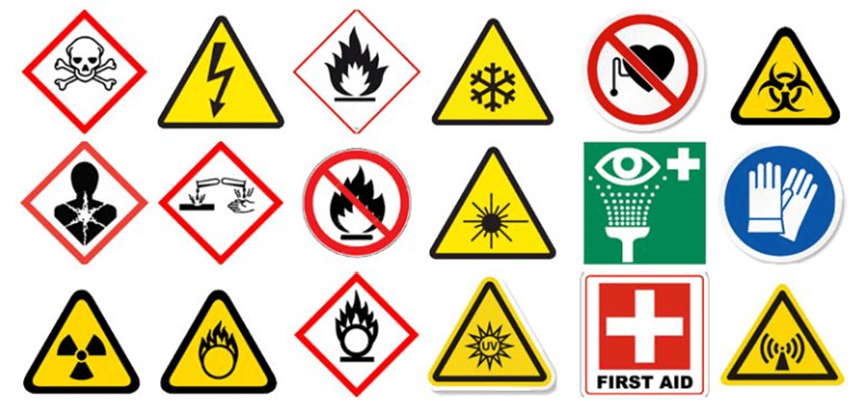Some Important Symbols or Signs | General Awareness - Bank Exams PDF Download
| Table of contents |

|
| Introduction |

|
| What are Important Signs and Symbols? |

|
| Conventional and Non-conventional Signs and Symbols |

|
| Difference Between Conventional and Non-conventional Signs and Symbols |

|
Introduction
Signs and symbols are visual representations that communicate ideas, concepts, or messages quickly and effectively. These symbols transcend language and cultural boundaries, making them universally recognizable. They are used in various fields such as communication, transportation, education, health, and safety. Understanding these signs and symbols is essential for better communication and comprehension. This topic is also crucial in Static General Knowledge (GK) and is often covered in competitive exams.
What are Important Signs and Symbols?
Signs and symbols are vital elements of human communication and comprehension. They convey meaning without relying on words and can appear in various forms, such as images, gestures, sounds, and written or printed characters. Below are some of the main reasons why signs and symbols hold significant importance:
- Communication: Signs and symbols offer a way to communicate that is understandable across various cultures and languages. They enable people to share messages quickly and clearly without needing lengthy explanations.
- Understanding: These symbols can express complex ideas and concepts in a simple and easily graspable manner. They help clarify information and assist in recalling important details.
- Identification: Signs and symbols help in recognizing people, places, objects, and concepts. For instance, a stop sign easily marks a spot where drivers need to halt their vehicles.
- Navigation: Signs and symbols aid in giving directions and guiding people through their environment. They are commonly seen on maps, road signs, and other types of indicators.
- Branding: Symbols are used to establish and promote brand identity. Logos and trademarks are crafted to be easily recognized and remembered by the public.
- Cultural Significance: Signs and symbols often carry cultural importance, representing beliefs, values, and traditions. They connect individuals and communities to their heritage and provide a sense of identity.
List of Important Signs and Symbols
A table that explains the meanings of various signs and symbols can be a useful resource for understanding and conveying information across different situations. Signs and symbols represent different ideas, objects, and concepts in a clear and visual way. Below is a table outlining the meanings of some common signs and symbols:
Symbol | Meaning |
Pen | Symbol of Culture & Civilization |
Lotus | Culture and Civilization |
Red Cross | Medical Aid & Hospital |
Red Flag | Revolution; also sign of danger |
Black Flag | Symbol of Protest |
Yellow Flag | Flown on ships or vehicles carrying patients suffering from infectious diseases |
Flag flown upside down | Symbol of Distress |
Flag flown at half mast | Symbol of National mourning |
White Flag | Symbol of Truce |
Red Triangle | Sign of Family Planning |
Pigeon or Dove | Symbol of Peace |
Red Light | Traffic sign of ‘Stop’, also sign of ‘Danger’ or ‘Emergency’ |
Green Light | Line clear signal or traffic sign of ‘Go’ |
Blindfolded woman holding a balanced scale | Symbol of Justice |
Black strip on forearm | Sign of mourning or protest |
One skull two bones crossing each other diagonally | Sign of ‘Danger’ |
Wheel (Chakra) | Symbol of Progress |
Olive Branch | Symbol of Peace |
Tricolour | National flag of India |
Union Jack | National Flag of the U.K. |
Stars and Stripes | National Flag of the U.S.A |
Conventional and Non-conventional Signs and Symbols
Conventional signs and symbols are those that have an agreed-upon meaning within a particular culture or context. Examples of conventional signs and symbols include:
- Road signs,
- National flags,
- Logos of companies, and
- Standard markings used in maps and diagrams.
Non-conventional signs and symbols, on the other hand, do not have a pre-existing agreed-upon meaning and are often invented on the spot. Examples of non-conventional signs and symbols include:
- Personal or idiosyncratic hand gestures,
- Symbols used in graffiti or street art, and
- Some forms of abstract art.
Difference Between Conventional and Non-conventional Signs and Symbols
Here is a table summarizing the key differences between conventional signs and symbols and non-conventional signs and symbols:
Conventional Signs and Symbols | Non-Conventional Signs and Symbols |
Have an agreed-upon meaning within a particular culture or context. | Do not have a pre-existing agreed-upon meaning and are often invented on the spot. |
Are commonly used and understood by many people within a particular culture or context. | May only be understood by a small group of people or even just an individual. |
Are often based on familiar objects or shapes that have been assigned a specific meaning. | Can take any form or shape and may not be based on any recognizable object or shape. |
Are typically taught and learned through formal education or cultural exposure. | Are often created spontaneously or through personal experience and may not be taught or learned in a formal setting. |
Can be found in a variety of settings, such as public spaces, roadways, and educational materials. | Are often limited to specific contexts, such as within a particular social group or community. |
|
365 videos|700 docs|149 tests
|
FAQs on Some Important Symbols or Signs - General Awareness - Bank Exams
| 1. What are conventional signs and symbols? |  |
| 2. How do non-conventional signs and symbols differ from conventional ones? |  |
| 3. What are some examples of important symbols or signs in the SSC CGL exam? |  |
| 4. Can you provide some examples of frequently used signs and symbols in the SSC CGL exam? |  |
| 5. How can understanding signs and symbols help in preparing for the SSC CGL exam? |  |




















